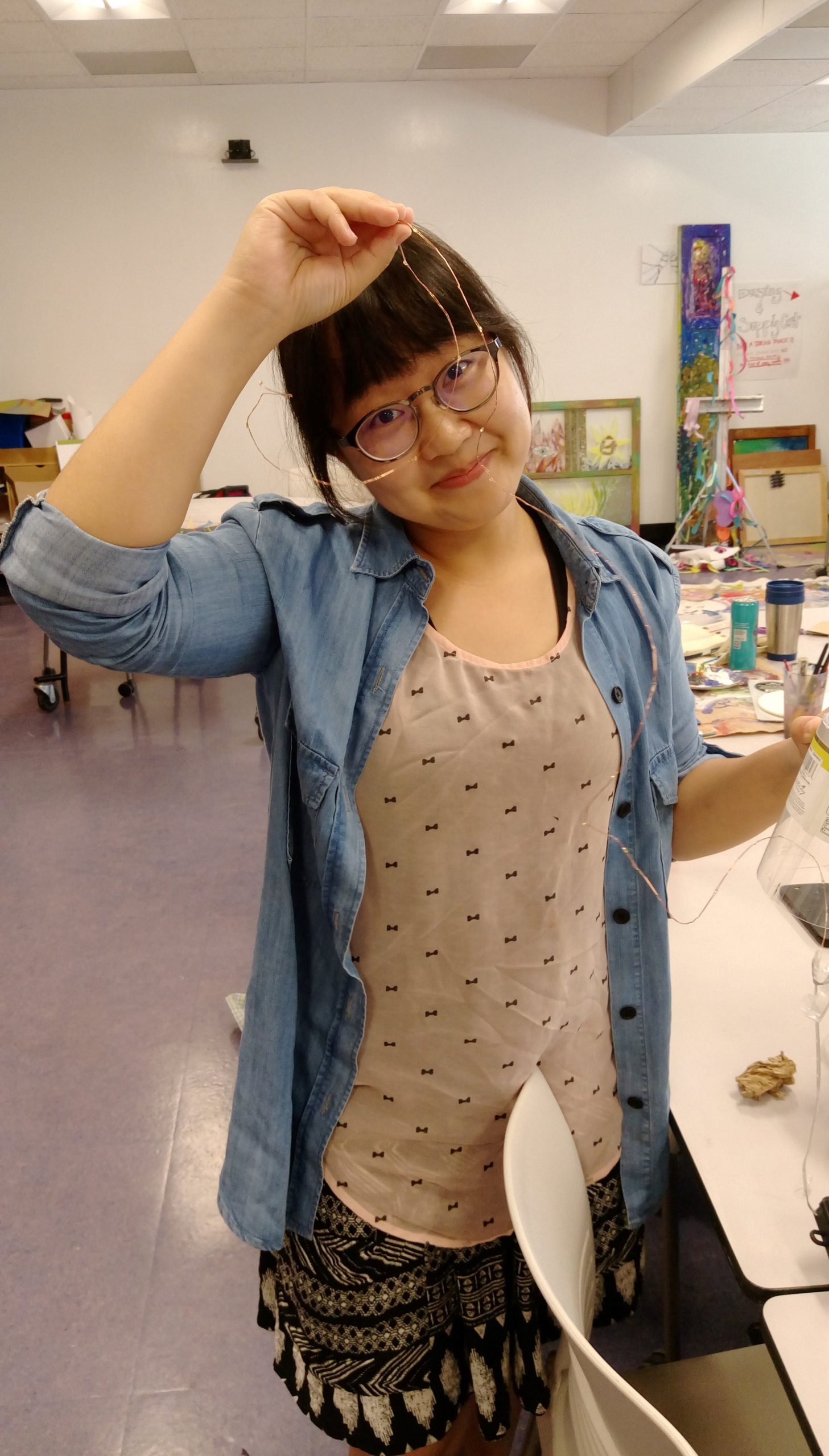May 17, 2023
The American Art Therapy Association represents a diversity of professionals, students, and organizations across the nation. We recognize and celebrate the work of our members at all levels through our Featured Member series.

Itinerary of the footprint of one step. By Kai-Ying Huang
Acrylic paint. 2018
What excites you most about your job right now?
Sharing art therapy with new communities and witnessing art therapy fosters the growth of cultural strength and resilience. I’m most excited about my new roles as an art therapy educator at the University of Taipei in Taiwan. Starting an academic position is one of the most exciting challenges in my art therapy professional’s career. This work can be very inspiring and stressful at times: witnessing my students’ passions and courage to seek, learn, and heal, is oftentimes meaningful. This continues to inspire me and my work.
Has working with a particular client group shaped your professional focus or specialty? What have you learned from working with these clients?
For almost a decade, I had the pleasure of serving as an art therapist at many community-based non-profit organizations that support survivors of human trafficking, domestic violence, and sexually abused populations in Asia. This experience deeply shaped my professional focus and has enabled me to specialize in intercultural practice and culturally-adapted theory for application of art therapy in ethnic Chinese communities. It has also helped me work to recognize my own colonial mindset and consciously engage in decolonizing of my thinking.
How have race and diversity impacted your work as an art therapist?
I am a Taiwanese-born art therapy sojourner who studied in the United States and then returned to Taiwan., My own journey has been one of continuous interweaving of acculturation and re-acculturation processes, both personally and professionally, which enables me to clearly see the cultural-bound values and assumptions in my art therapy practice and professional identity.
What are your hopes for the future of the art therapy profession?
I hope that we can be freed from the culture-bound therapeutic values and expand art therapy practice and training beyond the perspectives prescribed by an Eurocentric perspective of art therapy.
Is there something you would like to share about your journey thus far as an art therapist?
Art therapy is still a young profession in Asia. I had never heard about art therapy or anyone with expertise in using art to help people heal until I was in my second year of college. I chanced upon a Taiwanese art therapist who was invited by my professor to share her clinical experiences. As an audience member, I had tears in my eyes and was full of feelings of sadness and love. Don’t be afraid of going into unfamiliar places—you can a be part of the global art therapy community.
Kai-Ying Huang, DAT, ATR-BC

Kai-Ying Huang, DAT, ATR-BC, is a Board-Certified Art Therapist and Licensed Clinical Professional Counselor in Taiwan. She grew up in Taiwan and currently resides and works in Taipei city, Northern Taiwan.
She was educated in art therapy at The College of New Rochelle and earned a DAT in 2019 from Mount Mary University. She currently serves as an assistant professor at The University of Taipei, the first art therapy master program in Taiwan. She has presented numerous times at national and local conferences, has published book chapters and articles.
Dr. Huang has served as the Board of the Taiwan Art Therapy Association. In her research, she has focused on the relationship of Chinese culture and art therapy practice as a bridge in facilitating East-West dialogue.
